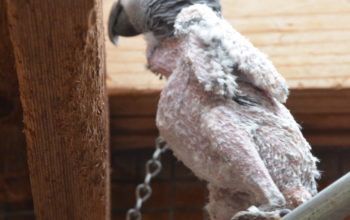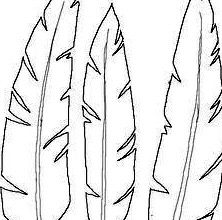Kenny & Judy Ford, of Missouri Valley, Iowa, went out and purchased several fragrances of Glade® Candle Scents and one Walmart brand scented candle. Kenny thought they would freshen their home during the long winter months without fresh air. The candles were burned frequently for 2 days before their first lovebird died. The second lovebird died later that evening. The Quaker was acting strangely the third day and by that afternoon, was also dead.
Louise Shimmels (Cascades Raptor Center) sent this warning letter to me to post to the list. She has been on a short leave from the list during this busy baby time. It certainly gives you something to think about. Marge Gibson
by Monica Sudds Certified Avian Specialist President Beakers Parrot Society Iowa State Coordinator for the American Federation of Aviculture
Lost: One Peach-faced Lovebird; One Rare Lutino Lovebird; One Quaker Parrot.Birds valued at over $400.00.
Kenny & Judy Ford, of Missouri Valley, Iowa, went out and purchased several fragrances of Glade® Candle Scents and one Walmart brand scented candle. Kenny thought they would freshen their home during the long winter months without fresh air. The candles were burned frequently for 2 days before their first lovebird died. The second lovebird died later that evening. The Quaker was acting strangely the third day and by that afternoon, was also dead.
Kenny and Judy were devastated at the lost of their pets. The symptoms were shakiness/trembling, inability to perch, then death. The time between the first sign of shakiness and death was a matter of a couple to a few hours. The candles had not been burned since the night before when the Quaker “Bob” succumbed in the morning.
Kenny and Judy loved their pets like children. Bob, the Quaker, was their pride and joy. Every time Kenny would come out to my store, he would tell me of all the new things Bob had learned to do and say. He was one really proud ‘parrot dad’.
So, I began to make some phone calls. I called several different divisions of the company whose candles the couple had purchased. I spoke with Lee Langsley, in the medical issues department, of SC Johnson Wax. He gave me some other numbers to contact. No one seemed to have any answers. Finally, I was contacted by Carey Manderfield, senior toxicologist, at SC Johnson Wax. From this conversation, I found that there was no one named Lee Langsley associated with the company. The person in the Medical Issues department who gave me this name had given me a phony name. There is, however, a person in the department named Lee Swanson, I was told.
I explained the situation to Mr. Manderfield. We spoke at length about bird’s delicate respiratory systems and the validity of the claim. Mr.and Mrs. Ford had already checked into the possibility of Carbon Monoxide poisoning, which seemed to be the only other possibility of why the birds had died so quickly. Mr. Manderfield did confess that they have not tested the products in question with birds. Mr. Manderfield promised to get back to me, with a response from the company, within a week. It’s been almost 2 weeks and I’ve yet to hear from the company in any form.
I also contacted a friend in Vancouver, B.C., Canada, Gillian Willis, who is a toxicologist, about the products being used in the Ford’s home. Although it doesn’t pertain to the candles specifically, the information I received is quite pertinent. The candles have a higher concentration of the volatile (essential) oils than the plug-ins contain and it is released into the atmosphere much more quickly. Ms. Willis was quite helpful and provided the following information:
Glade® Plug-ins contain: Fragrances > 90% Thickeners 3 – 6%
The fragrances are a mixture of volatile (essential) oils. The majority of these oils can cause either stimulation or depression of the central nervous system, as well as possible irritation to the eyes, nose and upper respiratory tract, depending on the oil and concentration used. Birds are very susceptible to the effects of inhaled volatile toxins, including essential oils.
I have a report on file of a woman who experienced marked respiratory tract irritation caused by excessive use of Glade@reg; Plug-ins in her home “to keep it smelling fresh.”
More recently, I was consulted on a case involving two cockatiels that presented to my avian vets. One bird had been lethargic for a few days and was brought into the clinic for assessment. The owners brought in it’s mate to keep it company during hospitalization. Over a period of hours, both birds became progressively lethargic, could not stand, developed hyperventilation and respiratory distress. Despite aggressive intensive care treatment, both birds died within a minute of one another, within 24 hours of presentation to the clinic. Necropsy revealed congestion in the lungs. There were no other significant findings.
Heavy metal poisoning was considered and ruled out radiographically. After an extensive investigation into the possible cause of death in the two birds, (one being apparently healthy prior to being brought into the clinic) the cause of death was likely due to exposure, during transport in the motor vehicle, to TWO pine-scented impregnated paper air fresheners. The length of exposure was approximately one hour, in a closed vehicle. Clinical manifestations in both birds were consistent with pine oil inhalation exposure.
The take-home message is that any volatile oil (fragrance) has the potential for causing illness and possible death in birds. Obviously, the concentration in a product and length of exposure are factors to be considered. Products containing a high concentration of volatile oils, as in Glade® Plug-Ins, should be avoided completely.
Gillian Willis Vancouver, B.C.
The Glade candles that were involved in the 3 day period, at the Ford’s home, were Vanilla, Peach, Potpourri, Cinnamon and one Walmart brand scented candle, Spiced Apple.
As I mentioned earlier, Judy and Kenny have ruled out every other possibility. They performed Carbon Monoxide checks all over their house and it showed nothing, until they lit one of the candles and sat it next to the tester for a few minutes. The indicator went into the lethal range. Now, if it was the Carbon Monoxide level that killed the birds, or the volatile essential oil fumes, we can’t be 100% sure. I can attest to the fact that the birds were in apparent good health before this situation occurred. The birds were all in separate rooms when they succumbed. There was a candle burning at different times in all of the rooms, so there is not one specific fragrance that could have been at fault.
What I expected from my phone calls, was the possibility of getting warning labels displayed on the various products that could be causing harm to, or the death of, our pet birds. I have had no response, as promised, from the company. So, I must assume that they have no plans to attach warning labels to thier products at this time and that they are not sharing our serious concerns.
Many manufacturers have started making their cleaning products ‘more pleasing’ to the senses by including these (fragrances) essential oils.
The bottom line is to protect yourself and be aware of the possible hazard these products could cause to the health of your pet birds. Volatile (essential) oils are in many products that we frequently use in our homes.
Mary Knapp, Gillette, Wyoming Owned by Igor (B&G), Zaphod (DYHA) and Bogie (CAG)




